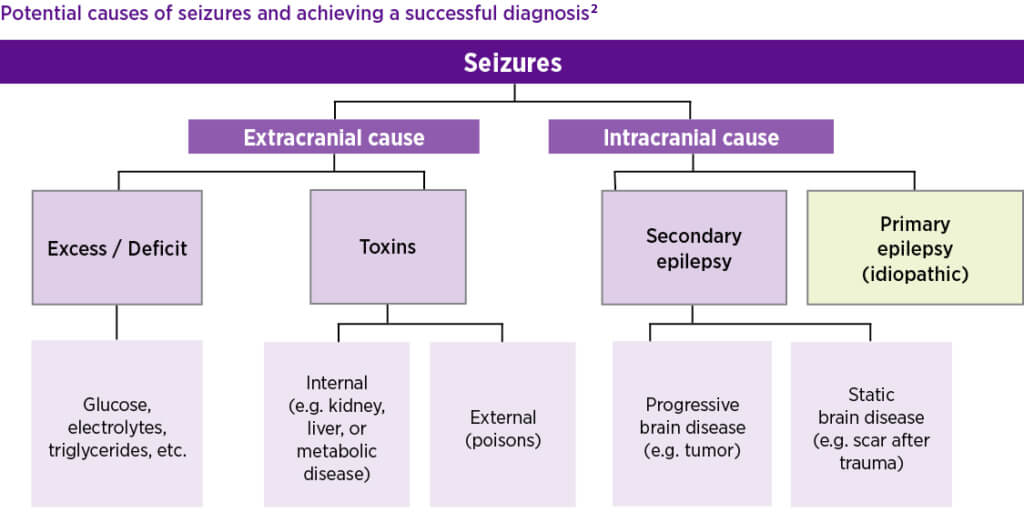Epilepsy Diagnosis
Diagnosis of idiopathic epilepsy is one of exclusion and is based on age of onset, behavior between seizures and ruling out of other acquired diseases that can manifest seizures.1
Idiopathic epilepsy can be controlled successfully throughout the life of the dog with continued monitoring of the patient and support of the owner expectations.

While Idiopathic Epilepsy is Treatable, it Requires A High Level of Commitment
- A pet experiencing seizures is NOT in pain – a dog does not realize they have had a seizure; it is not a quality of life issue for them.3
- Epilepsy is a chronic condition; we cannot cure the disease, but we can control it.
- Appropriate control will require some trial and error to regulate medication levels, including multiple office visits and diagnostic tests.
- The management of idiopathic epilepsy will require a team approach – it requires commitment to lifelong management of the condition.
- Defining expectations is essential for successful management of idiopathic epilepsy.
Seizures are a clinical sign of the disease and therapy goals are to decrease the number of seizures that dogs experience but are unlikely to be completely eliminated.
1. De Risio L, Platt S. Canine and Feline Epilepsy: Diagnosis and Management. 1st ed. CABI; 2014.
2. Patterson EE. Canine epilepsy: An underutilized model. ILAR Journal. 2014;55(1):1-3.
3. Canine seizure disorder: A fresh look at clinical management. Proceedings of a Panel Discussion. (Available online at PRNPharmacal.com)
